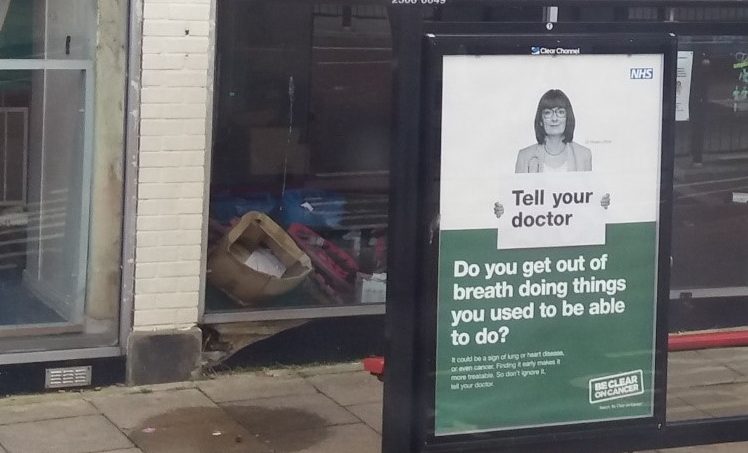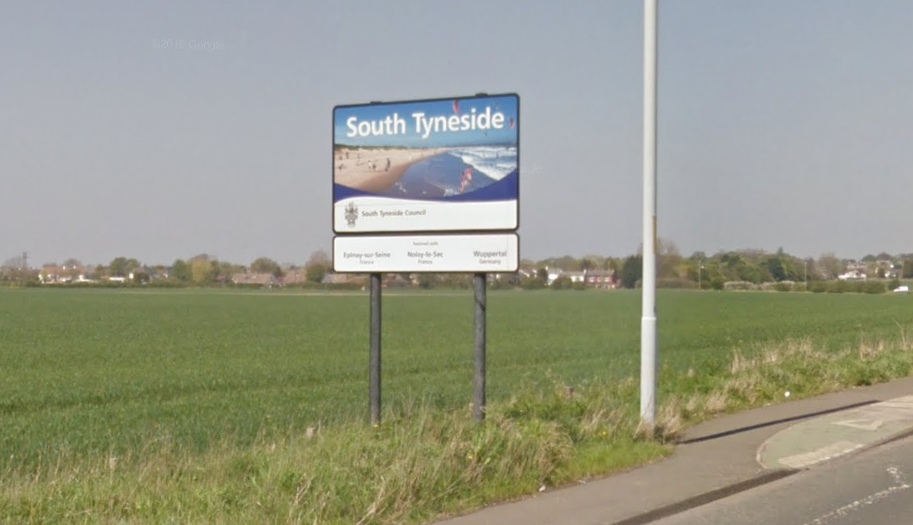Not Everyone Can Take Breathing for Granted
PhD student Fredrik Nyman reflects on what he has learned from people living with breathlessness.
Breathing may be a basic physiological process, but it also carries deep cultural and personal meanings. It is associated intimately with our state of mind and is unique amongst our bodily processes in being both autonomic and controllable. Although it may seem like an effortless act to most, breathing for individuals with lung disease can require extra energy and be a painful and physically challenging experience.
In 2016, the British Lung Foundation (the only UK charity concerned with all types of lung conditions) published a special report entitled The Battle for Breath that looked at the overall extent and impact of lung disease across the UK. The results were breathtaking (pun intended), to say the least: the report revealed that there are more people living with lung conditions in the UK than previously thought. Lung disease is one of the three biggest killers in the UK today. Not only are one in five of the UK population diagnosed with a lung disease at one point in their life, but it also kills one person every five minutes. The number of deaths from lung disease has barely changed in the last decade, and in the face of an ageing population these numbers are likely to increase further. The Battle for Breath calls for an elevation of lung disease to the same level as cancer and cardiovascular disease in terms of the UK’s health priorities.

Despite these staggering numbers, in England and Scotland there are currently no plans to improve the care or services available to people with lung disease. Although plans are in place in Wales, the British Lung Foundation states that these interventions will require extension and enhancement if they are going to be at all effective. Ian Jarrold (the British Lung Foundation’s Head of Research) reaffirms these concerns in a blog post from November 2016, where he illustrates how respiratory research continues to be hugely and consistently underfunded by the UK government. In the UK, 12 million people have been diagnosed with lung disease, compared to 2.5 million with cancer and 7 million with cardiovascular disease. Yet these latter two disease areas allegedly receive at least ten times as much research funding in comparison to lung disease.
My first ‘real’ field experience meeting people with lung disease was in March 2017, when I attended a fundraising event held in a town in County Durham. It was organised by a local support group consisting of people who live with breathlessness, and their families and friends. The hosts had set up several tables across the floor decorated with blue and red balloons, showing their support for the British Lung Foundation. William, who himself has lived with asthma all his life, was one of the hosts (and speakers) for the evening and he welcomed everyone with a very personable speech:
Expressing my nervousness earlier on this evening, I was advised to ‘take a deep breath, you’ll be fine.’ But therein lies part of the problem. Having less than wonderful lung function isn’t always conducive to taking a deep breath. In fact, there are lots of things made a little tricky by being breathless. Even some of the things that cause enjoyable breathlessness may not be quite so enjoyable. Respiratory disease often isn’t much fun at all. Appearances can be deceptive. Many of us who struggle with breathlessness look perfectly well. We are often round faced and rosy on [steroids]. You can’t tell that it took half an hour to get my socks on or know that I have my hair cut like this because I can no longer wield the hair drier. In fact, respiratory disease is a killer, right up there with heart disease, stroke, cancer and Alzheimer’s disease. It is, unlike many of these, on the rise as a killer. Yet for some reason, it isn’t talked about as much. Research isn’t as well supported. Neither are those who are struggling with it. Those of us affected by it aren’t sure why that is. Breathlessness can be isolating and lonely. It can be socially and physically limiting. It can be embarrassing and awkward – all that noisy breathing and coughing! It can be exhausting and frightening. The drugs can be unpleasant, with all sorts of side effects. There is often no cure, so those living with it constantly face life-threatening, life-limiting experiences with poor quality of life.

It was a heart-warming moment. Especially considering how for people who experience breathlessness, activities that rely on speech hold many challenges. William clarifies that chronic breathlessness may be kept hidden for several reasons, which is why it is important to shine light on these issues to relieve suffering and overcome stigma. When people arrive at the clinic and are being told they have a lung disease, their journey is far from over. There are more problems to overcome further down the road. When breathlessness is a symptom of lung disease it often becomes chronic. Even after maximum treatment has been offered, people are still left with significant struggles in their everyday lives. Some people deal with breathlessness better than others, but when it comes down to it, doctors are trained to treat diseases – not symptoms. Yet for those suffering from chronic lung disease, breathlessness will get consistently worse. Eventually, doctors reach a point where ‘nothing else can be done’ and patients will stop complaining and just deal with it, meaning those living with breathlessness may become even more invisible – or, perhaps, even forgotten.

Tell your doctor!” (NHS England)
Researching lung disease in the UK has taken me to several places across the country, but primarily around the North East where lung disease is especially prevalent. Next to the North East, lung disease is also highly prevalent in the North West of England, south Wales, and urban Scotland (Glasgow, especially). The Battle for Breath explains how the high number of deaths from chronic obstructive pulmonary disease (COPD) and lung cancer – most of which are smoking-related (80%) – are a significant cause for the high mortality rates in these areas. Hospital admission rates are also higher in these regions, and especially the urban parts of northern England. Yet it is important to remember that statistics are mere abstractions that help us explain variation. The regional impact of lung disease on health services should be understood on a condition-by-condition basis.
Throughout my travels, I have made acquaintances of the most extraordinary kind. Still, there is one couple that left an imprint on my mind. Their names are Jon and Elinor, and I visited them in their home in South Tyneside. I had come to interview them for my dissertation, which was delicately done over home-made tuna sandwiches. Jon is the one with a lung condition while Elinor is his primary caretaker. But if there is anything I have realised from talking to people with lung disease it is that these ‘spheres’ are entangled, because lung disease affects the lives of not only the sufferers but also their families. When I asked about his condition, Jon described how:
As I child, I went to the hospital about every year or so. I had always gone, since I was very young. I was never told how my condition works. My parents might have, but it was never explained to me. At least, nothing more than that the bottom part of one of my lungs had been damaged. It was not until about 2008, when I saw a new consultant – who was just brilliant – and she told me about how my condition actually works. When she had explained it to me, I said to her, ‘You have told me more about my illness these past fifteen minutes, than anybody else in my entire life’.
This last sentence stuck with me. Despite how upsetting it may sound, these experiences are not unusual for people with lung disease. Jon has bronchiectasis that developed after he contracted pneumonia as a child, which left scarring on his lungs. Unlike other lung diseases, bronchiectasis is not caused by smoking. In bronchiectasis, the airways are scarred and inflamed with thick mucus. The airways become widened and thus cannot clear themselves properly, which means mucus continues to build up and as a result the airways can become infected by bacteria.

South Tyneside, where Jon and Elinor live, is a so-called lung disease ‘hotspot’ zone according to the British Lung Foundation. In fact, people in South Tyneside have a 62% higher risk of a future hospital admission with COPD than the UK average. Alongside that, the mortality rates for mesothelioma (a rare, aggressive form of cancer that most commonly develops in the lining of the lungs and chest wall) are higher here than almost anywhere else in the UK. More than 80% of mesothelioma cases are caused by exposure to asbestos. As the UK permitted the use of this mineral long after other countries had banned it, it is rather unsurprising that the numbers for this disease are as high as they are.
Writing in his foreword to The Battle for Breath Professor Sir Michael Marmot describes how “[b]reathing is something we all do, day in, day out, every day of our lives. It is so innate that most of us rarely stop to think about it. We think less of breathing than of the life it sustains.” I believe that no truer words have been spoken about breathing. It is a universal physiological process, which is rarely given much thought. But this cannot be said for the millions of people across the UK and the rest of the world for whom the sensation of breathing is never forgotten or taken for granted. For sufferers of lung disease, these delicate organs with which they breathe are not working as they should.
If there is something I have learnt from speaking to all these individuals living with lung disease, it is that breathlessness is a very personal experience. It can be fleeting or a sign of something more serious. It allows us to speak, laugh, and sing. It connects us to the outside world and physical surroundings. It reflects our state of mind and can be consciously controlled. For many it has religious or spiritual significance, and thus the personal and cultural meanings of breath and breathing go beyond the simple act of keeping us alive.
Originally posted on The Northern Review (now closed)



